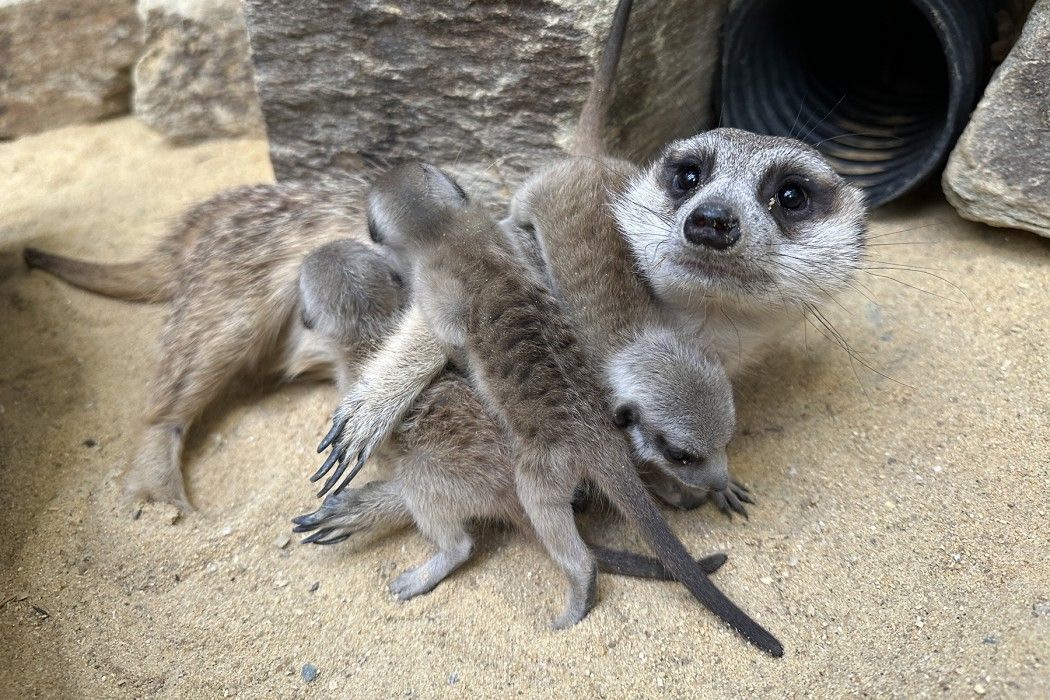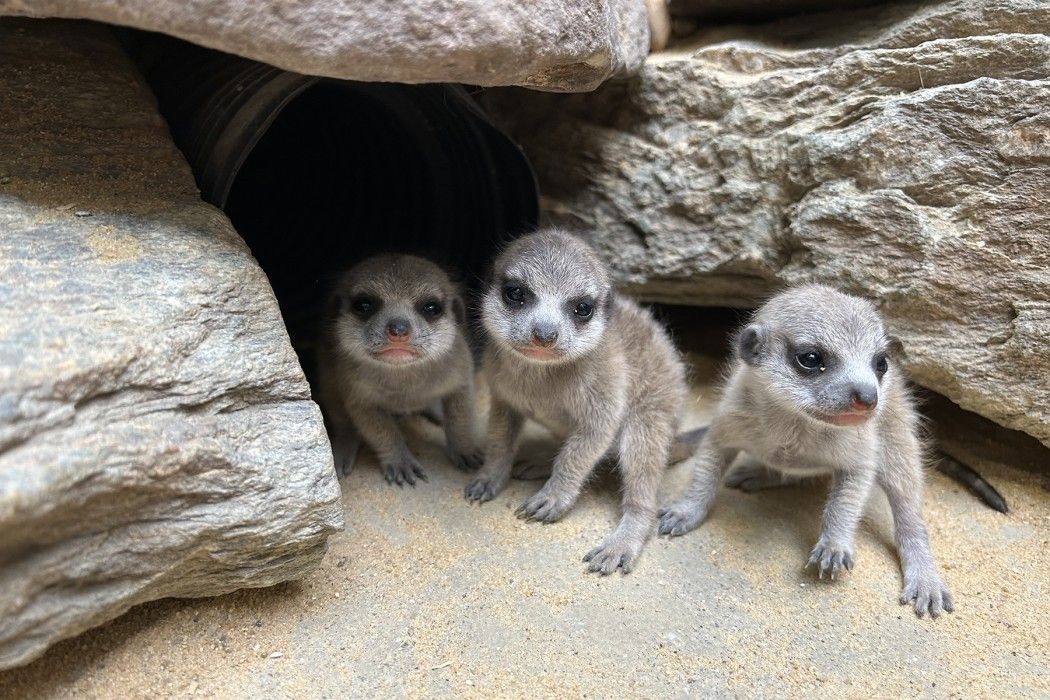NATIONAL ZOO AND CONSERVATION BIOLOGY INSTITUTE
Get to Know the Zoo’s Meerkat Pups
From sweet snuggles to sassy vocalization and snatching snacks, it’s been a busy June for the Smithsonian National Zoo’s growing meerkat pups!
/https://tf-cmsv2-smithsonianmag-media.s3.amazonaws.com/filer_public/98/c8/98c8d76e-51b6-4d1f-94f8-b21e019daa27/20230523-anngutowski-004-meerkat-pups.jpg)
The 1.5-month-old meerkat trio is the first of their species born at the Smithsonian National Zoo and Conservation Biology Institute's Small Mammal House in 16 years. Keeper Ann Gutowski shares some of her favorite moments with the newest members of the meerkat mob in this Q+A.
What are the pups’ personalities like?
Curious, sassy and bold. We are surprised how feisty they are! Despite their tiny size, they are already trying to wrestle food away from the adults. Meerkats in general are very possessive of their food and defend their prey from other members of their mob.
Like most siblings, they squabble, pounce on each other and play-fight. When they are trying to be intimidating, they will often vocalize at the adults—and even at keepers! But, they still like to snuggle with each other and the grownups, too.
How do they spend their day?
The pups often follow the adults around like little shadows, but they will explore and play on their own as well. They practice digging and will climb on top of the logs and rocks to sit with dad, Frankie, while he does sentry duty.
Every day, we give the mob enrichment—items that keep their minds and bodies active while encouraging natural behaviors. The pups especially enjoy chasing live crickets and tearing apart butcher block paper and cardboard!
What has been your favorite moment with the pups?
In the wild, meerkat pups typically remain in an underground burrow for about 3 weeks as protection from predators. At the Small Mammal House, their habitat has a tubing system with a nest box at one end to encourage this natural burrowing behavior. The adults surprised us by bringing the pups out of the nest box on their first day!
At first, their eyes were closed, and they were pretty helpless. By day 14, they were wide-eyed and running around the habitat, exploring every inch. The pups climb everything, from the furniture in the exhibit to hopping upon the scale we use to weigh the adults.
It’s amazing how fast the pups have grown up. They are so brave and come right up to keepers to investigate our shoes, too!

How do the adults interact with the pups?
Mom Sadie and dad Frankie are attentive and nurturing parents. Frankie often rolls on his back and invites the pups to lay across his stomach.
Sadie seems pretty confident the pups are safe and will let them be their independent selves. If a pup cries out, one of the adults will go check on them. Sadie is still nursing the pups but often leaves them with Frankie or her sister, Stella.
Aunt Stella seems to enjoy babysitting the new additions and often snuggles with them as much as their parents do.

What’s next for the pups?
In the next few weeks, we expect them to stop nursing and change entirely to solid foods. In the wild, meerkats primarily eat insects, such as grubs and termites. Here, we feed them a carnivore meat mix, kibbles, apples root vegetables, mealworms, crickets and earthworms.
They will also have their first vet exam at 6 months old. At that time, we will determine if we have boys, girls or a combination.
Got any tips for spotting them on exhibit?
Our meerkats are most active early in the morning and in the afternoon. If the pups aren’t out exploring, they are likely snuggled up with Sadie. She often sleeps curled around them, so look for tiny tails poking out from underneath her. If they aren’t in a sunny spot, check the nest box that is concealed under the rocks against the glass. Often, you can see them sleeping in a pile in their underground burrow!
Want more baby animal news? Don’t miss the latest #GorillaStory update on the Zoo's western lowland gorilla infant, Zahra!



